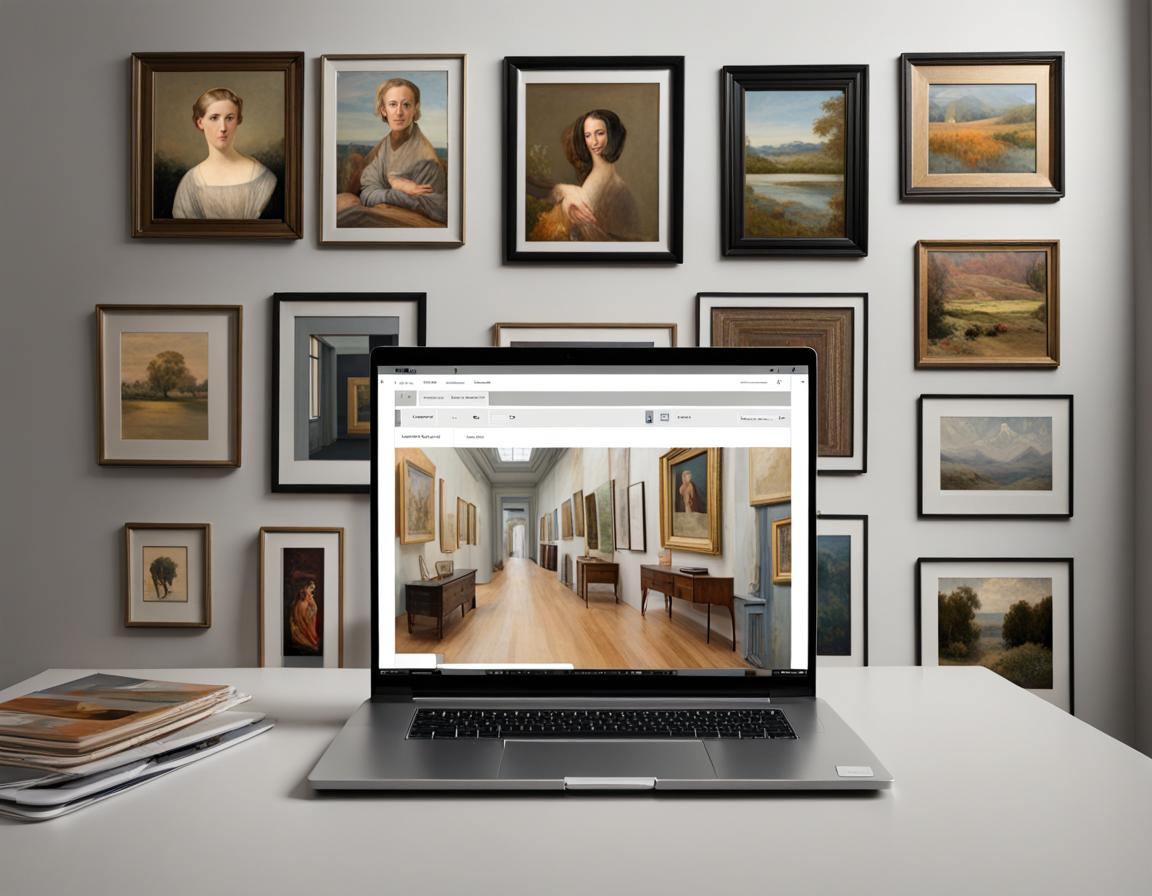
Introduction
In the competitive world of art, a well-crafted portfolio is essential for showcasing your work, attracting potential clients, and securing opportunities. Whether you’re a painter, sculptor, digital artist, or photographer, your portfolio represents your artistic identity. Here’s a comprehensive guide to help you create an outstanding portfolio that captivates and convinces.
Understanding the Purpose of Your Portfolio
Before diving into the creation process, it’s crucial to understand the purpose of your portfolio. Are you applying to art schools, seeking gallery representation, or looking for freelance opportunities? Tailoring your portfolio to your specific goals ensures that it effectively communicates your strengths and style to the intended audience.
Selecting Your Best Work
Quality Over Quantity
A common mistake artists make is including too many pieces in their portfolio. Instead, focus on quality over quantity. Select 10-20 of your best works that demonstrate your skills, creativity, and versatility. Each piece should contribute to a cohesive narrative about your artistic journey.

Showcasing Versatility
While it’s important to highlight your unique style, showcasing versatility can also be beneficial. Include a range of works that display different techniques, mediums, and subjects. This not only illustrates your adaptability but also keeps the viewer engaged.
Curating a Cohesive Theme
Consider curating a theme or a consistent style throughout your portfolio. This helps create a cohesive presentation telling a story about your artistic vision. Whether it’s a particular color palette, subject matter, or technique, consistency can make your portfolio more memorable.
High-Quality Images
Professional Photography
Investing in professional photography for your artworks can make a significant difference. High-quality images capture the details, textures, and colors of your pieces more accurately, making them more appealing to viewers. If hiring a professional isn’t feasible, learn basic photography techniques to improve your shots.
Proper Lighting and Backgrounds
Ensure your artworks are well-lit and photographed against neutral backgrounds to avoid distractions. Natural lighting works best, but if you’re using artificial light, make sure it’s evenly distributed. Avoid shadows and reflections that can detract from the quality of the image.
Digital Portfolio: Building an Online Presence
Choosing the Right Platform
In the digital age, having an online portfolio is essential. Platforms like Behance, Adobe Portfolio, and Squarespace offer user-friendly templates designed specifically for artists. Choose a platform that allows you to customize your site and present your work professionally.
User-Friendly Navigation
Ensure your online portfolio is easy to navigate. A clean, intuitive design helps viewers focus on your art without unnecessary distractions. Categorize your works logically, and include a menu or navigation bar to guide visitors through different sections.
Optimizing for SEO
To increase the visibility of your portfolio, optimize it for search engines. Use relevant keywords in your titles, descriptions, and alt text for images. For example, if you’re a watercolor artist, phrases like “watercolor paintings,” “abstract watercolors,” and “contemporary watercolor art” can help attract more traffic.
Mobile Responsiveness
With a significant portion of web traffic coming from mobile devices, ensure your portfolio is mobile-friendly. A responsive design adapts to different screen sizes, providing a seamless viewing experience across all devices.
Physical Portfolio: The Traditional Touch
Presentation Matters
If you’re presenting a physical portfolio, the quality of your presentation is crucial. Use a professional-grade portfolio book or binder. Ensure that prints are of high quality and neatly arranged. Consider using protective sleeves to prevent damage.
Organizing Your Portfolio
Organize your works in a logical sequence. Start with a strong piece to grab attention and end with another strong piece to leave a lasting impression. Group similar works together to create a cohesive flow.
Including Context and Descriptions
Titles and Mediums
Clearly label each artwork with its title, medium, and dimensions. This information provides context and helps viewers understand your work better.
Artist Statements and Descriptions
Include brief descriptions or artist statements for each piece. Discuss your inspiration, process, and the story behind the artwork. This adds depth to your portfolio and engages the viewer on a more personal level.
Highlighting Achievements and Experience
Exhibitions and Awards
List any exhibitions, awards, or recognitions you’ve received. This validates your skills and demonstrates your experience and credibility in the art world.
Education and Training
Include information about your education and any relevant training or workshops. This helps potential clients or employers understand your background and commitment to your craft.
Client Work and Commissions
If you’ve done commissioned work or have notable clients, feature these in your portfolio. Testimonials from satisfied clients can also add credibility and build trust.
Keeping Your Portfolio Updated
Regular Updates
An outdated portfolio can give the impression that you’re not actively creating. Regularly update your portfolio with new works and remove older pieces that no longer represent your current skill level or style.
Seasonal Themes and Projects
Seasonal themes and special projects can breathe new life into your portfolio, demonstrating versatility and relevance. Here are some ways to effectively incorporate these elements:
- Holiday-Themed Art: Create festive pieces and limited-time merchandise.
- Seasonal Scenes: Paint or illustrate seasonal landscapes and document the process.
- Monthly/Quarterly Projects: Develop new themed series and announce via newsletters.
- Collaborations/Challenges: Participate in art challenges and collaborate with other artists.
- Event-Specific Art: Create and exhibit works related to major events.
- Interactive Projects: Engage audience with polls and idea contributions.
- Educational Content: Offer tutorials and workshops.
- Storytelling: Develop narrative series or evolving characters.
Summary: Tips for Artists
Creating a compelling art portfolio involves selecting your best works, ensuring high-quality presentations, and maintaining a cohesive theme. Invest in professional photography, optimize your digital portfolio for SEO, and ensure mobile responsiveness. Organize your physical portfolio neatly and include contextual details like titles, mediums, and artist statements. Highlight achievements and regularly update with new works, seasonal themes, and projects. This approach will help attract clients, secure opportunities, and effectively showcase your artistic journey.
Additional Resources:
Discover the Top Watercolor Painting Influencers to Inspire Your Art
Watercolor NFTs: A Beginner’s Guide for Artists
Turning Your Passion into Painting Business: From Brushes to Balance Sheets
How to Promote and Market Your Artwork Like a Pro


